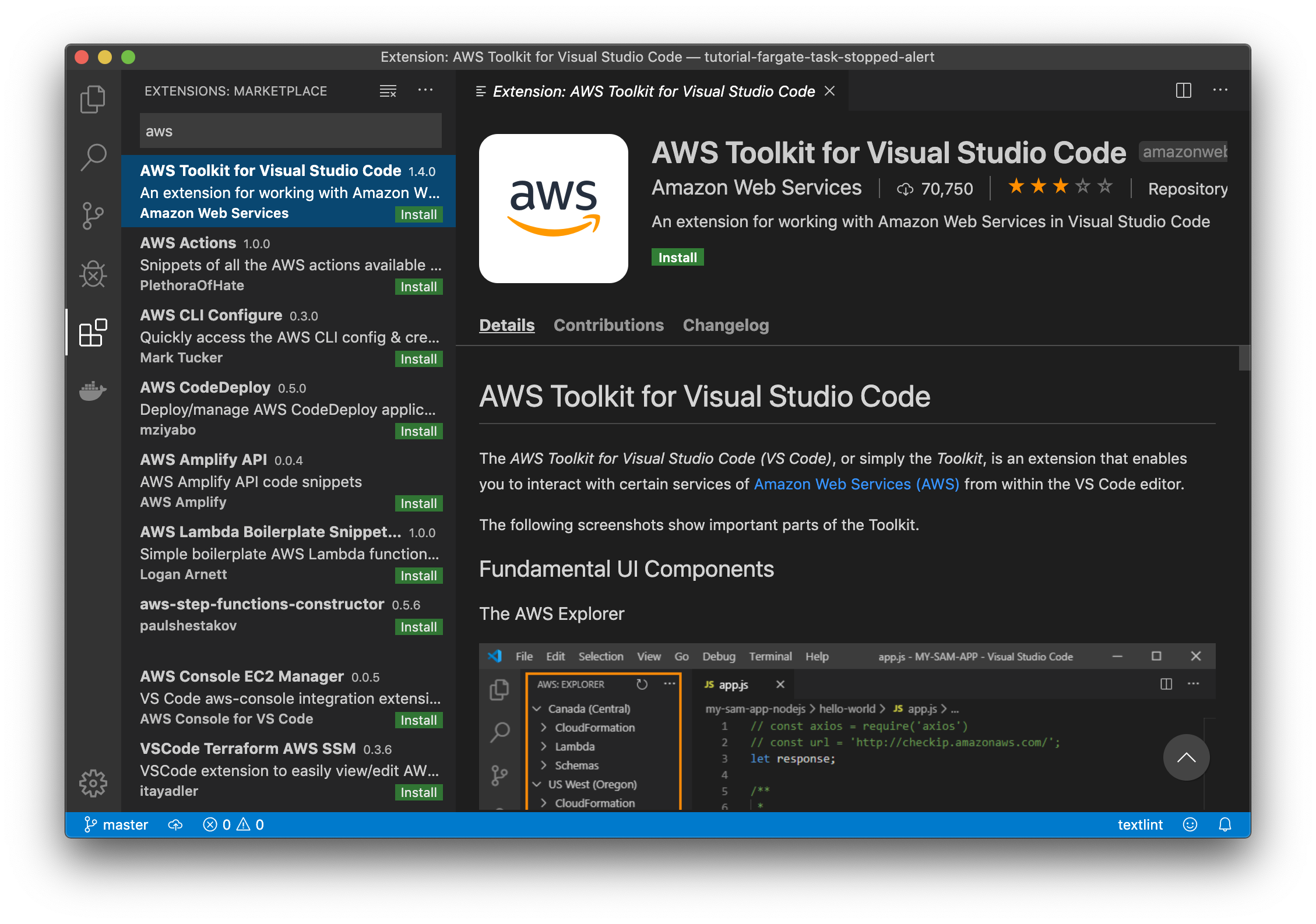

Aws toolkit software#
It needs to contain the AWS CLI and the VSTS Linux (or Windows) Build Agent software installed and configured. The AWS VSTS Build Agent can be any VM (a Linux VM on AWS or Azure, a Windows VM on Azure or AWS it doesn’t matter). This custom build agent needs to contain the AWS CLI. To get build and release working for Amazon hosted systems it requires a dedicated build agent. So now it comes to the Build and Release pipeline for AWS.
Aws toolkit how to#
We will cover the details on how to author a CloudFormation template in different post. To test your AWS CloudFormation templates you can also deploy to AWS platform from the Visual Studio client directly or by copy and pasting it in the AWS portal: You can simply open up an example AWS Cloud Formation template and author to make it fit for your use case.
Aws toolkit update#
In this way we can create and update our CloudFormation templates using our familiar Microsoft tooling you might be already using for ARM. For authoring such an CloudFormation template you can download the AWS toolkit for Visual Studio. This is named CloudFormation which can be used to create 95% of the AWS cloud resources. AWS offers similar template and cloud platform provisioning capabilities to what we have on Azure using ARM. Great are also the integration capabilities of VSTS, it supports many platforms and many languages, also Amazon AWS. VSTS is optimized for releasing systems and provisioning environments on Azure, many out of the box capabilities which speed up teams. VSTS covers many needs for teams and pipelines out of the box. Visual Studio Team Services and Amazon AWS The artifacts should be versioned, validated, automated and more, see pipelines principles. The principles of a pipeline also fit on pipelines which provision infrastructures. See also the Dev/prod parity practice of the 12 factor methodology. Keep development, staging, and production as similar as possible. The provisioning of resources for systems in an automated versioned way supports also the need of consistent environments across different stages of system development, making it much more comfortable to develop, validate and test systems.
Aws toolkit code#
Infrastructure as Code is one of the many practices teams have to fulfill the needs of modern systems.


 0 kommentar(er)
0 kommentar(er)
